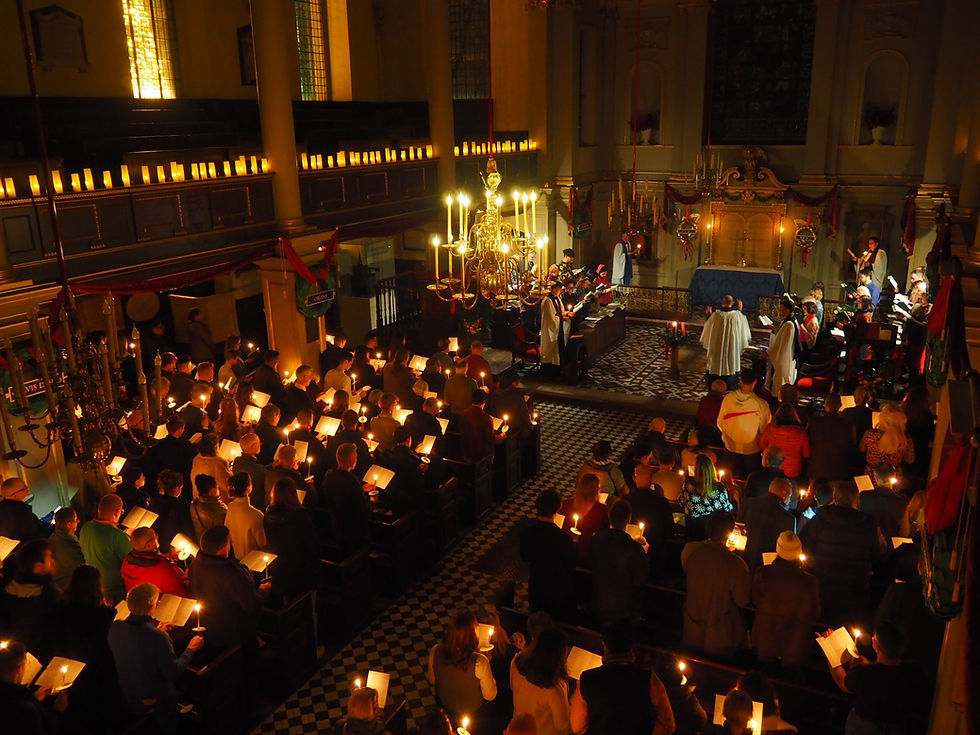The Empire of Booze
- St Giles Online
- Jan 4, 2018
- 3 min read
In December's Pelican, Alan pondered the our neighbourhood's boozy history

I have mixed feelings about the social heritage of St Giles - racy, extreme, entrepreneurial,
outlandish, unconventional it was, but also desperate, poverty stricken and a byword for
dissolute excess. Some find it colourful and faintly romantic, but I suspect the experience
was very different. Richard Nissen, who attends on Sunday evenings, passed on an extract
from a recent book, ‘Empire of Booze: British History through the bottom of a glass,’ by
Henry Jeffreys, published in 2016, where we find the following about gin and Giles, together
with my own commentary!
London was, in 1716, the largest city in Europe with over half a million inhabitants. Many of the new inhabitants came to the slums of St Giles. This was the epicentre of the gin craze and it was where Hogarth’s Gin Lane was set. This is the area south of Bloomsbury between the churches of St Giles-in-the-Fields, built in 1733 and still standing to this day [of course it is!] and St Martins-in- the-Fields, also still standing [as above!]
‘The words of St Giles became synonymous with desperate poverty [I told you so]. To ‘dine with St Giles and the Earl of Murray’ meant to go without one’s dinner. The Earl was buried in St Giles churchyard. Many of the inhabitants would have come from Ireland and the area became known as Little Dublin. The houses were old and insanitary. It was run on a system of subletting where the people who actually dwelt in the houses were royally ‘screwed.’ A tiny group of people owned the area who would then let streets to speculative businessmen who would then in turn let out houses whose rooms would then be let out and so on until some families were renting in a corner of a cellar. These cellars were often flooded and were filled with effluent. Under these circumstances you can see why people would turn to drink [a suspicious argument still used to lump rough sleepers with drug use - I’m not wholly convinced.] As Peter Ackroyd put it in his Biography of London,‘only sex and drink could make the situation bearable,’ and indeed the area was notorious for sexual licence and prostitution. The inhabitants of the slums had nothing to sell and so they sold themselves. Ackroyd goes on to say that by the 18 th century drinking reached massive, even crisis, proportions.
‘There is very little left of the old slum area. it was cleared in the 19th century when New Oxford Street was built through the middle of it. One of the most notorious sites is now Google’s London headquarters. Yet this area is still a congregation area for the destitute. [I hope he is not talking about the congregation of St Giles!] On a recent visit to St Giles Church there were tramps sleeping or trying to sleep on the hard wooden pews [goodness knows when the author visited but surely not in the last few years] and Centre Point, which was at the heart of the old parish of St Giles, [is a parish ever aged?] acts as a congregation point for down-and- outs. [Again, our author is about 10 years out of date.] Hogarth would have recognised some aspects of the area even today. [Really: Central St Giles? The new underground station? The author seems full of his own romanticism. But what Hogarth would recognise, or so it seems to me, is just how much drinking still goes on in this neighbourhood, and not just by the destitute.]




Comments